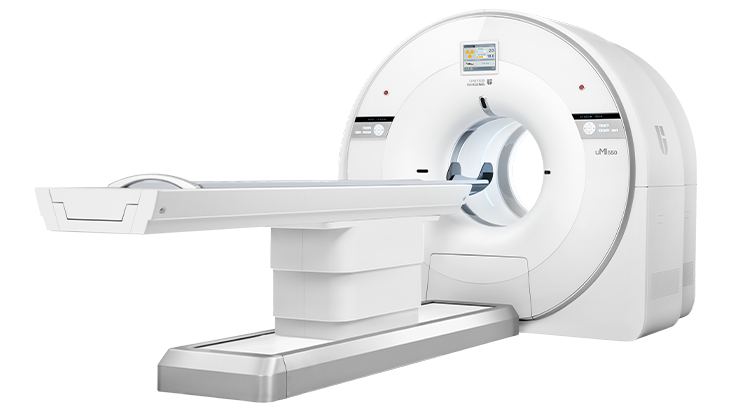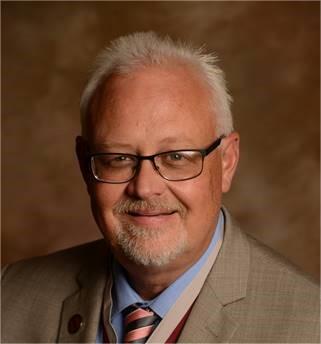
Tell us about your mission, and your community and how you serve their healthcare needs.
Columbus Regional Health's mission is to improve the health and well-being of the people we serve. Our facility is a community-based health system that serves a 10-county region in south-central Indiana. Our flagship facility is located in the city of Columbus, which is a diverse community of approximately 50,000 people.
CRH's mission compels us to seek local and regional growth. Our current growth areas of focus are Oncology, Cardiology and Orthopedics. As an essential department to these growth areas, Imaging Services works to provide highly skilled technologists and equipment that meet and anticipate the needs of the services required. CRH Imaging Services completed nearly 116,000 exams in 2021.
What issues do you face (what problems are you trying to solve) as it relates to choosing medical imaging equipment? What is important to you?
Battling for capital dollars is one of our department's biggest challenges. These dollars are at a premium, with Oncology, Surgery, Cardiology and IT all battling for their piece of the pie. I see this approach changing across the healthcare landscape as more facilities keep equipment longer to stretch those expenditures, all while working to provide excellent patient care. This can be very challenging in some cases as equipment ages. The technology isn't progressing as fast as it was a few years ago in some cases, which allows us to keep equipment until it is closer to end of life by manufacturers' standards. But at CRH, we have an even more unique situation in that in 2008, when our facility flooded, nearly every piece of equipment was replaced. This also means the replacement for much of that equipment is occurring simultaneously, so we have to balance all of the organization's needs. This has forced us to look more closely at our current volumes, growth potential and our vendor partners. Our vendor partners are key to facing these challenges.
How do you vet a new purchase – what do you evaluate?
For all of our projects I use a team approach that is comprised of the modality manager, lead tech or team member, and myself at a minimum. Getting feedback from the front-end users early on and bringing them along in the process is immeasurably valuable. I will often post a question on the AHRA Forum to get guidance from my peers on their successes, and to learn about when a vendor hasn't quite lived up to expectations. I also query my peers in Indiana specifically because we can talk about service in our state: the good the bad and the ugly. We ARE the vendor's biggest asset for the next sale, in my opinion. I try to get it down to maybe three vendors before we start really diving into specifics. I would say my approach is vendor neutral. Typically, I will research using a myriad of vendors and information to narrow down the vendors to 2-4 for presentations.
For my PET/CT replacement project I looked at our current vendor, their closest competitor and a company that I would say is relatively new to the market. With the help and framework from an AHRA peer I created a "Vendor Comparison Tool" which either the vendor or I can complete, and then did a side-by-side comparison of various aspects of the equipment. This helps ensure that although vendors call the same thing different names, my team and I can keep it all straight. We evaluate dimensions like current market share, service history, vendor reputation, service cost, staff training, equipment cost, and 5-year TCO.
What did you learn about United Imaging in the process of evaluating us?
I was introduced to United Imaging in 2019 at their debut at RSNA. I was AHRA President at the time, and we met with United Imaging leadership concerning working together with the Education Foundation. At the time, I was surprised by the technology and presentation… slick, clean, and fresh. I later saw one of their PET/CT systems at a site in northern Indiana. After speaking to my peer there, I was very surprised by what he was telling me about downtime, service, and experience with the team. His words to me: "I've never seen anything like it, and they are changing the game." At that point I knew that we had to have more in-depth discussions and include United Imaging in the process. But there were some concerns. Our current system had controls on the back of the scanner that made it easier for cardiac PET exams. Some concern about noise level of the scanner. I was a little concerned about service location as well. I spoke to two other customers with the last one being on a mobile performing Cardiac PET. The demo was outstanding and the staff's endorsement helped pull United Imaging into the top 2 final vendors. Upon further review, the staff became very excited with United Imaging and moved them to the forefront. After reviewing all of our criteria listed above, United Imaging stood out. I discussed my decision with my Vice President, and he also met with United Imaging and walked away impressed. In the end, we eliminated our incumbent vendor and chose United Imaging's PET/CT.

What benefits do you find in our technology and in the product you purchased from us, both from your internal staff's perspective and in terms of meeting your goals for your patients?
The following is our justification for choosing United Imaging.
- Improved patient satisfaction
- Short scan times increases patient satisfaction and reduces potential for motion artifacts. Reduced average patient scan time from 24-28 mins to 8-12 mins.
- High sensitivity allows for lower injected dose/patient and staff radiation dose exposure
- Image Quality
- Large field of view which increases photon count and image quality. (24 cm compared to 22cm)
- Digital PET improved the detection of small lesions over high resolution conventional PET. Radiologist review of images was overwhelming in favor of United Imaging.
- Staff at reference sites raved about images as much as the Radiologists.
- Technology
- Digital imaging is the future and superior method for imaging PET.
- All future software packages included at no extra charge
- All general software upgrades are included as long as a service contract is in place
- Overwhelming approval of current customers. One told me: "I've never worked with a vendor like United Imaging that is focused on their customer and the patients – it is truly unique."
Here is what our staff at Columbus Regional Health thinks:
"I love it! It is so easy to use and to try different protocols. I could never do that with our previous system that have worked on for 13 years. I absolutely love it."
"Image quality is excellent. Less radiation exposure and less dose to the patient and to me. Cardiac images look really great!"
"Very user friendly, adjusting protocols on our own is quick. Overall, patients are much happier, many comments about shorter scan times."
The proof we made the right decision is in the result. Even after the installation, United Imaging has continued to impress and show their customer and patient focus.
United Imaging should be in every evaluation, for replacement or new purchase. They opened our eyes and proved they deliver on their promises of a fresh approach and outstanding equipment and service.




